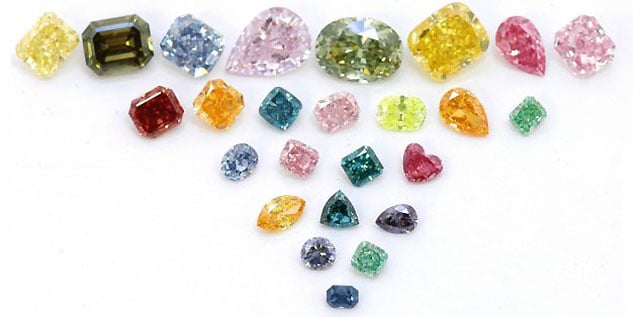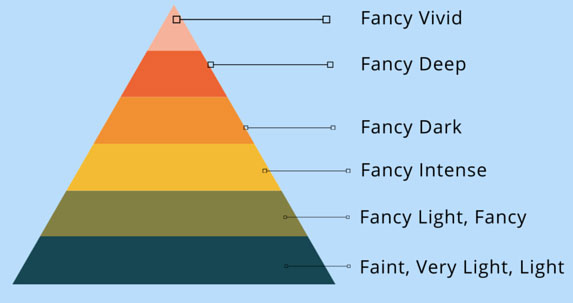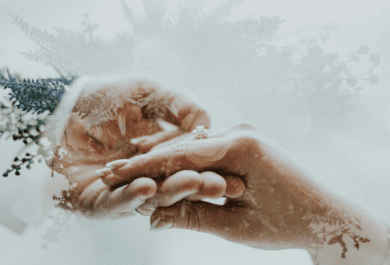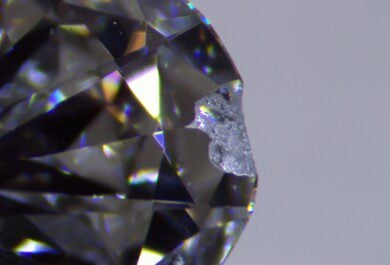By PS Staff

Image: Courtesy of Leibish & Co.
Long-time readers of our site know that fancy colored diamonds are graded differently than the traditional white diamonds. Let’s take a quick look at how colored diamonds are graded compared to their colorless brethren.
The Color System
Colorless diamonds are graded on the absence of color. The less color, the higher and more expensive the grading. For colored diamonds, the higher the color intensity, the more expensive the diamond.
| Hue |
Tone |
Saturations |
| A diamond’s overall body color. |
A diamond’s lightness or darkness in relation to body color. |
The intensity or degree of color. |
Fancy Color Terms on Grading Reports

Color popularity also increases a diamond’s price.
What Gives Them Their Color?
-
Yellow Diamonds – Presence of nitrogen.
-
Brown, Pink and Red Diamonds – Colored graining, which results from structural irregularities in the crystal lattice – sometimes in combination with an impurity.
-
Blue Diamonds – Presence of boron with possible presence of hydrogen.
-
Green Diamonds – Natural radiation.
-
Grey and Violet Diamonds – Most likely the presence of hydrogen (grey diamonds are known for high amounts of hydrogen, while violet diamonds are still being studied for exact cause of color).
-
Black Diamonds – Dark inclusions or impurities, which are great in number and evenly distributed throughout a diamond.
-
Orange Diamonds – Structural irregularities combined with trace elements like nitrogen, though exact cause of color is still being studied.
To learn more, read our Fancy Colored Diamonds tutorial.













